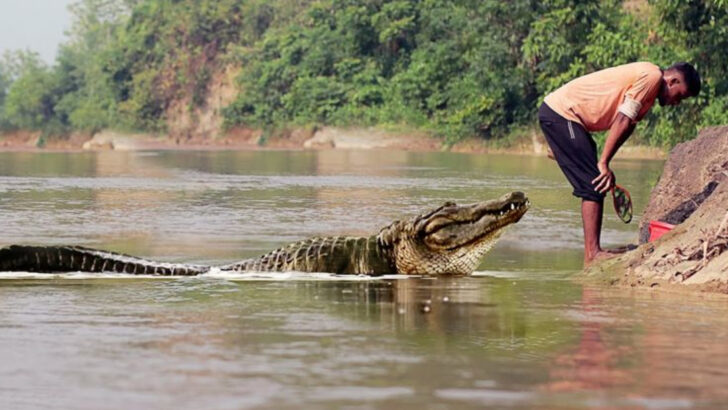Some animals don’t just bite—they hunt. And sometimes, humans end up on the menu. Forget the friendly dolphin or the shy deer. We’re diving into creatures with killer instincts, razor teeth, venomous strikes, and zero hesitation when it comes to taking down prey—even people. From the silent stalkers of the jungle to the terrors that cruise beneath the waves, these deadly hunters aren’t just dangerous—they’re deliberate. And while a few make headlines, others creep by unnoticed until it’s far too late. But don’t worry—it’s not all doom. We’ll also meet the misunderstood predators with scary reputations who usually couldn’t care less about us. Ready to separate the true man-eaters from the falsely accused? Let’s step into the wild, where danger isn’t always where you expect it.
Great White Shark
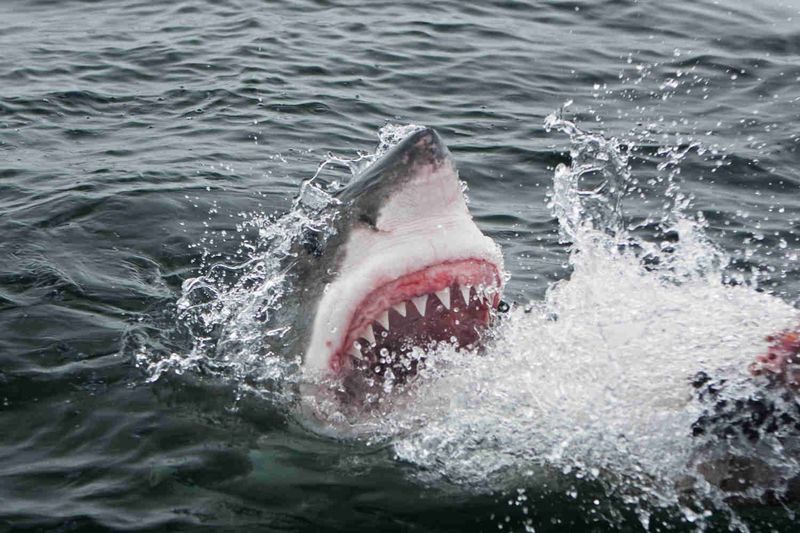
With its sleek, torpedo-shaped body, the great white shark is a formidable predator of the deep. Known for its role in movies and horror tales, this apex hunter utilizes its keen sense of smell and acute hearing to locate prey from miles away.
Remarkably, great whites can detect a single drop of blood in an Olympic-sized swimming pool. Though attacks on humans are rare, their sheer power makes them a force of nature. Interestingly, these sharks often “sample” their prey, which can lead to dangerous encounters.
Their mysterious migrations and social behavior remain subjects of marine research.
Nile Crocodile
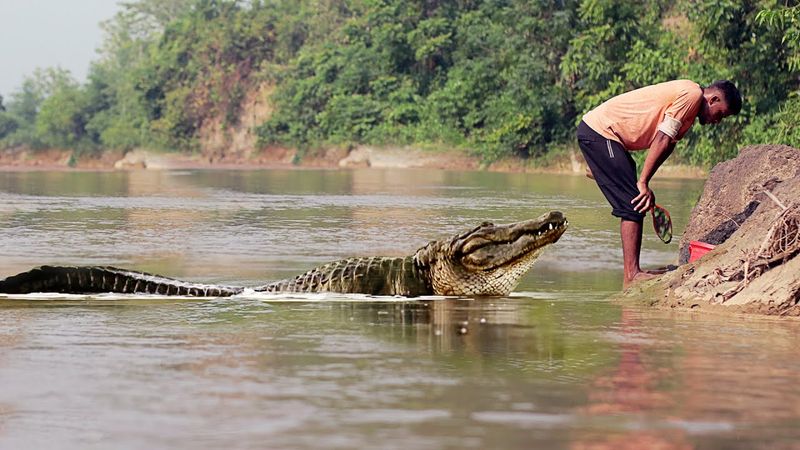
Imagine being near the edge of a river, only to realize a silent predator is watching. The Nile crocodile, with its formidable jaw strength, preys on unsuspecting creatures that venture too close to the water.
This ancient hunter is known for its ambush tactics, launching itself with astonishing speed. While it’s true many animals fall victim to its stealth, humans occasionally find themselves in danger, particularly in areas where habitats overlap.
Respected and feared in equal measure, the Nile crocodile is a symbol of raw, untamed power. Its survival tactics are a marvel of evolution.
African Lion

With a roar that can be heard up to five miles away, the African lion is often dubbed the king of the jungle. This social big cat hunts in prides, using teamwork to take down prey.
Despite their regal appearance, lions can become dangerous to humans, especially in regions where human encroachment leads to conflict. The rare instances of man-eating lions have added to their fearsome reputation.
Historically, lions have been both revered and feared, embodying strength and courage. Their presence in folklore and mythology highlights their iconic status in human culture.
Saltwater Crocodile
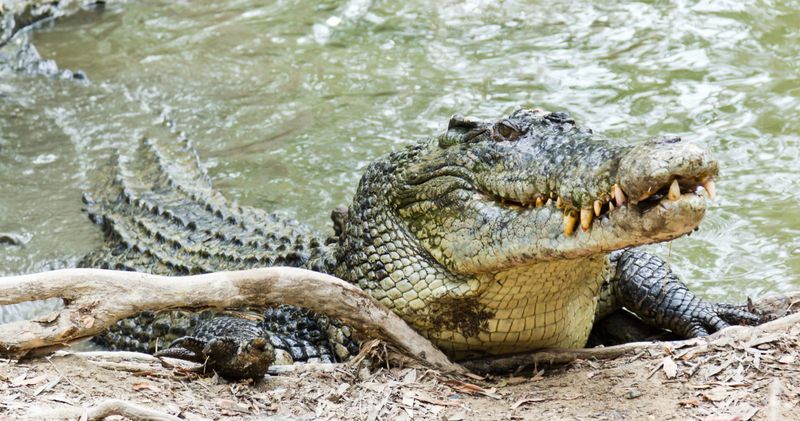
In the warm waters of Southeast Asia and Australia, the saltwater crocodile reigns supreme. Known for being the largest living reptile, it boasts incredible strength and agility.
Unlike its freshwater relatives, this croc is equally at home in the sea, making it a versatile hunter. While human interactions are rare, they can be deadly, especially near nesting sites or feeding grounds.
The saltwater crocodile’s prehistoric lineage and survival prowess inspire awe. It remains a living testament to the power of adaptability and raw strength in the animal kingdom.
Leopard
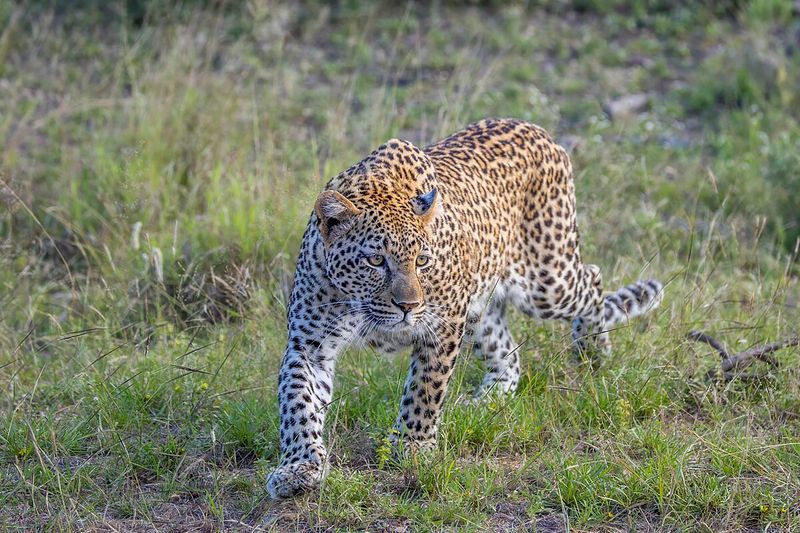
Elusive and agile, the leopard is a master of stealth. Often found lounging in trees, it uses its impressive climbing skills to ambush prey from above.
This solitary cat’s adaptability has allowed it to thrive in various habitats, from dense forests to arid deserts. While they’re generally elusive, leopards can become threats to humans, especially if cornered or provoked.
Their spotted coat provides perfect camouflage, and their elusive nature adds to their mystique. In many cultures, leopards are symbols of cunning and agility, admired for their elegance and strength.
Tiger
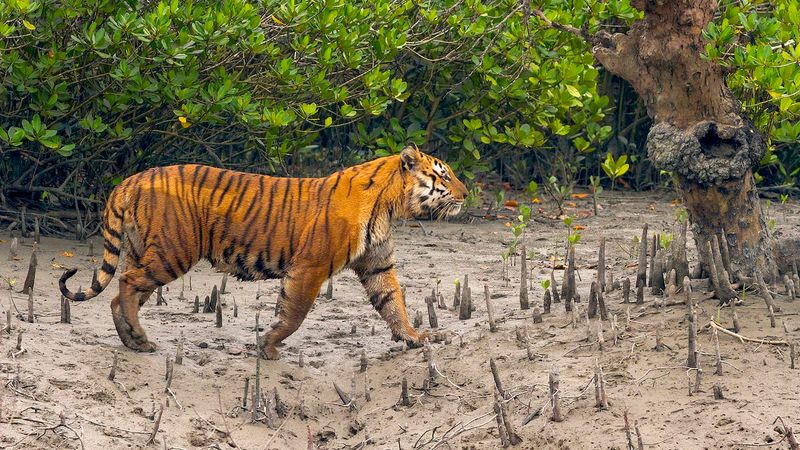
The Bengal tiger, with its mesmerizing stripes, rules the jungles of India. Renowned for its strength and cunning, this solitary hunter stalks its prey with unmatched precision.
Though encounters with humans are infrequent, they can be perilous, particularly in areas where habitats overlap. Man-eating tigers have become part of folklore, adding to their fearsome reputation.
The tiger’s grace and power have made it an object of fascination and reverence. Conservation efforts continue to ensure these magnificent cats remain a part of our world, their stripes a symbol of wild majesty.
Box Jellyfish

Appearing almost ethereal, the box jellyfish is one of the ocean’s most venomous creatures. Found in the waters of the Indo-Pacific, its sting can be lethal to humans.
Despite its beauty, this jellyfish commands respect. Tentacles lined with thousands of stinging cells can cause severe pain and even cardiac arrest. Swimmers in affected regions are always on high alert.
Its delicate appearance belies its dangerous nature, making it a paradox of beauty and danger. The box jellyfish remains a subject of fascination and caution for marine biologists and ocean enthusiasts alike.
Polar Bear

Amidst the icy expanses of the Arctic, the polar bear is a solitary hunter. Its massive paws and white fur make it perfectly adapted to its cold environment.
As climate change affects their habitat, polar bears increasingly encounter humans, sometimes leading to dangerous situations. Their strength and tenacity make them formidable opponents in their quest for food.
Polar bears symbolize the harsh beauty of the polar regions. They stand as a reminder of the fragility of ecosystems and the ongoing battle against climate change, drawing attention to the urgent need for conservation efforts.
Komodo Dragon
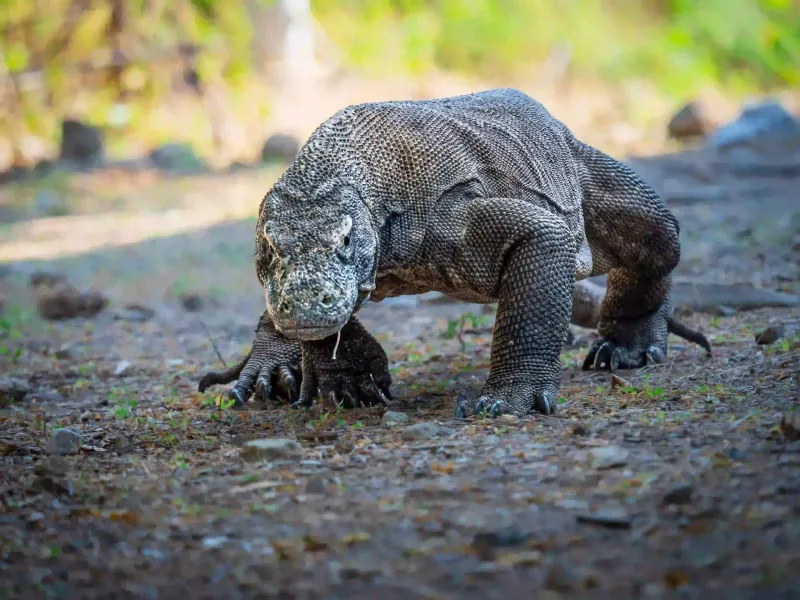
On the islands of Indonesia, the Komodo dragon is a fearsome sight. As the largest living lizard, it boasts venomous saliva and a keen sense of smell.
These reptiles can track prey for miles, using stealth and patience. Though attacks on humans are rare, they can be fatal, leading locals to approach with caution.
The Komodo dragon’s ancient lineage and predatory prowess are awe-inspiring. Its presence on the islands is a reminder of the untamed world that still exists, offering a glimpse into the primeval past.
Black Mamba
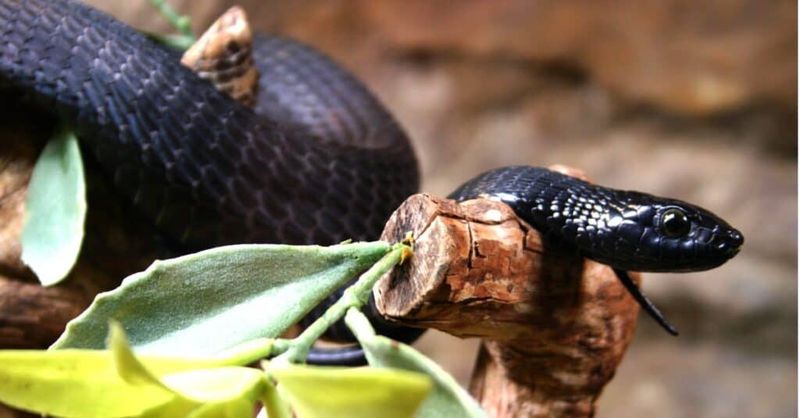
In the heart of Africa, the black mamba is a symbol of speed and agility. Known as one of the most venomous snakes, its reputation precedes it.
This snake’s aggression and potent venom make it a formidable foe. Despite its fearsome image, it avoids humans when possible, striking only when threatened.
The black mamba’s mystique and danger have made it a subject of legend and fear. It embodies the wild and unpredictable side of nature, a creature to be respected and admired for its survival skills.
King Cobra
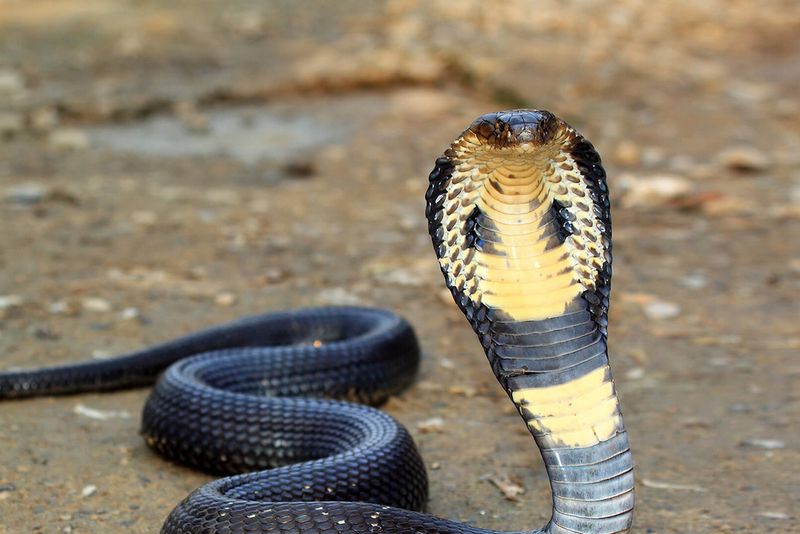
Majestic and imposing, the king cobra commands attention. Found in the jungles of India and Southeast Asia, it’s the world’s longest venomous snake.
While its bite is deadly, the king cobra prefers to avoid confrontation. It hunts primarily on other snakes, showcasing its dominance in the reptile world.
Despite its fearsome reputation, the king cobra is a fascinating creature. Its intelligence and unique behaviors continue to intrigue herpetologists. In many cultures, it’s revered as a symbol of power and mystery, embodying both danger and grace.
Brown Bear
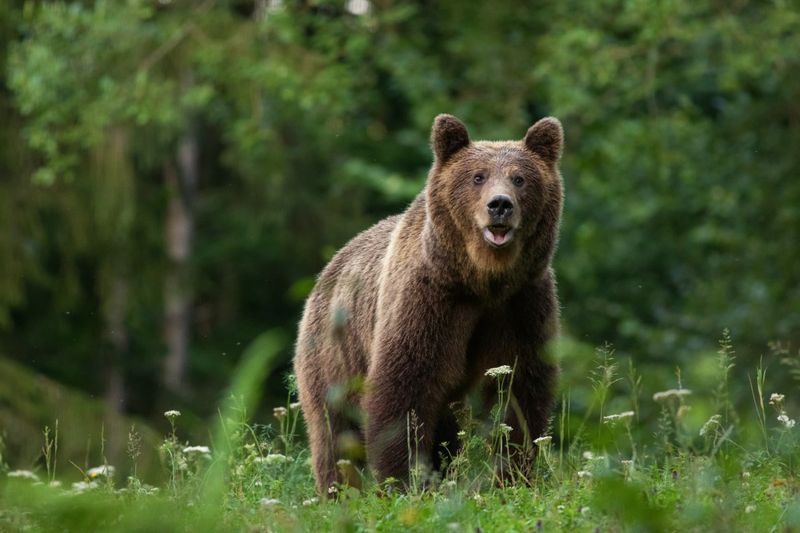
In the wilds of North America, the brown bear stands as a symbol of strength and wilderness. With its massive frame and powerful limbs, it commands respect.
While not naturally aggressive towards humans, encounters can be dangerous, especially if the bear feels threatened or if young cubs are nearby.
Brown bears are an integral part of forest ecosystems, contributing to the balance of nature. Their presence in folklore and stories highlights their majestic and sometimes fearsome nature, capturing the imagination of those who venture into their domain.
Wolf

The haunting howl of a wolf under a moonlit sky evokes both fear and fascination. As skilled pack hunters, wolves are symbols of teamwork and intelligence.
Despite their portrayal as fearsome predators, wolves rarely pose a threat to humans. Their intelligence and complex social structures make them subjects of ongoing research and admiration.
In myths and legends, wolves are often depicted as cunning and mysterious creatures. Their presence in folklore underscores their significance as both feared and revered animals, embodying the untamed spirit of the wilderness.
Giant Anteater
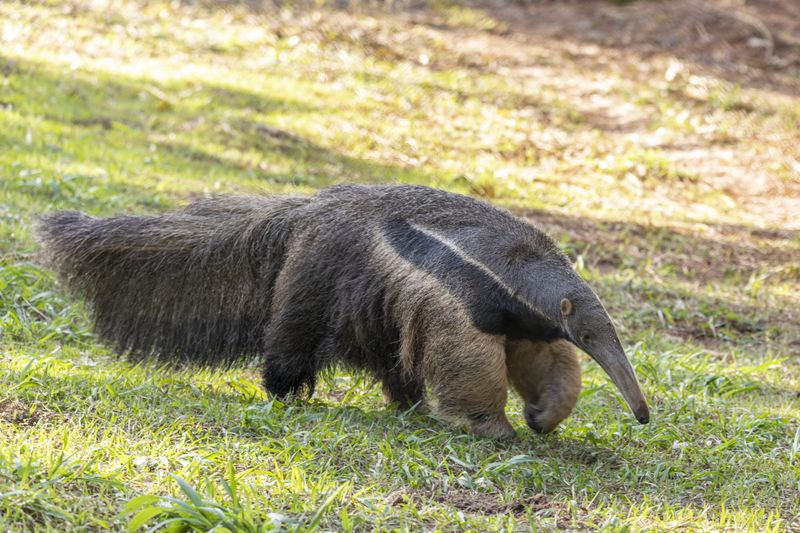
With its bushy tail and elongated snout, the Giant Anteater is a fascinating creature. Found in the grasslands of South America, this animal is an insectivore, primarily feasting on ants and termites.
Despite its size and formidable claws, it is not a threat to humans. The anteater uses its claws for digging rather than aggression. When provoked, it may stand on its hind legs, but rarely attacks.
Its unique feeding habits and gentle demeanor make it an intriguing but safe presence in its natural habitat. Known for its solitary behavior, it’s more interested in food than confrontation.
Manatee

Known as the sea cow, the manatee is a gentle giant of the ocean. With its slow-moving nature, it gracefully glides through the waters of Florida.
Manatees are herbivores, primarily eating seagrass, and are known for their friendly and calm demeanor. They pose no danger to humans, often approaching boats out of curiosity.
Their graceful movements and serene presence make them beloved creatures among marine wildlife enthusiasts. Sadly, they face threats from habitat destruction and boat collisions, making conservation efforts crucial to their survival.
Capybara
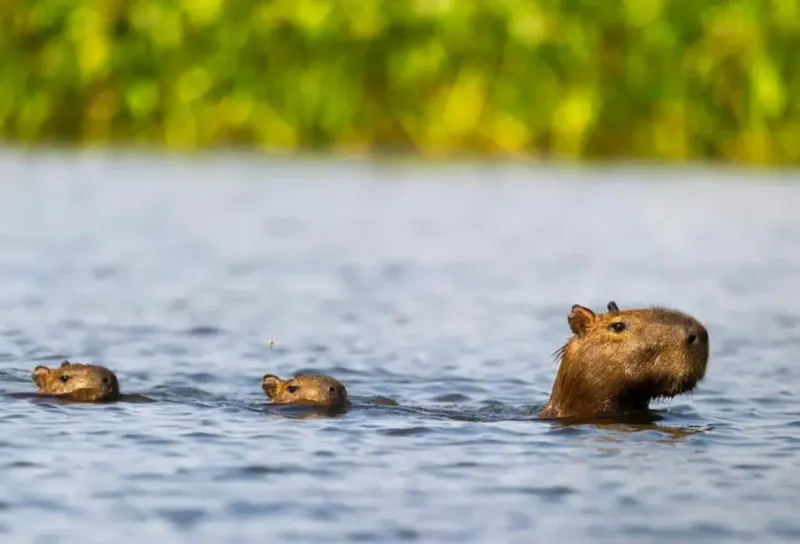
The capybara, the world’s largest rodent, is renowned for its social nature and gentle disposition. Found along the riverbanks of the Amazon, these creatures live in groups.
Despite their size, they are herbivores, feeding on grasses and aquatic plants. Capybaras are known for their friendliness, often seen interacting with other species harmoniously.
Their easygoing nature makes them a favorite among wildlife watchers. They are a testament to peaceful coexistence in the animal kingdom, thriving in their lush and watery habitats without posing any danger to humans.
Sloth

Famous for its slow and deliberate movements, the sloth spends most of its life hanging from trees. Found in the rainforests of Central America, these creatures are solitary and gentle.
Sloths are herbivores, eating leaves and fruits, and pose no threat to humans. Their slow pace and tendency to blend into the foliage make them a unique and endearing sight.
Their existence highlights the adaptability of nature, surviving in a world that emphasizes speed and agility. Despite their lethargic reputation, sloths play a crucial role in their ecosystem.
Red Panda
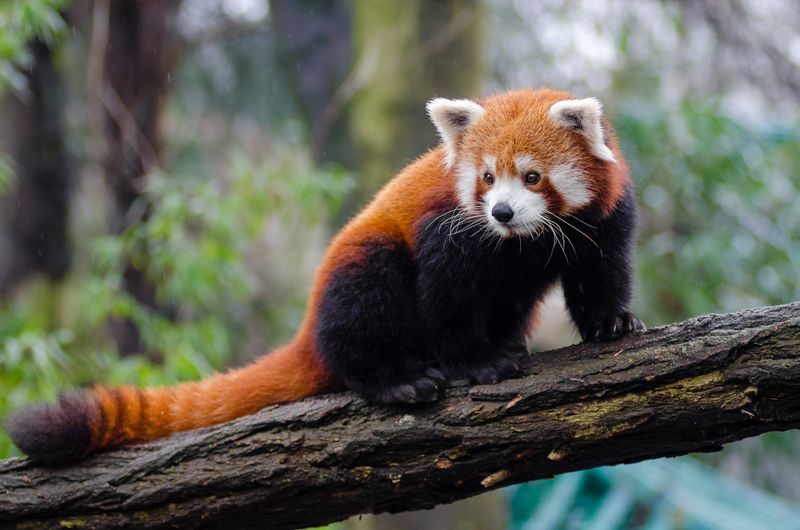
With its striking red fur and bushy tail, the red panda is a charming creature of the Eastern Himalayas. Despite their resemblance to raccoons, they belong to their own unique family.
Red pandas are herbivores, mainly eating bamboo and occasionally fruits. They are shy and solitary, avoiding confrontation with humans.
Their playful antics and distinctive appearance make them a beloved sight in their natural habitat. Unfortunately, habitat loss poses a significant threat to their survival, underscoring the need for conservation efforts.
Quokka
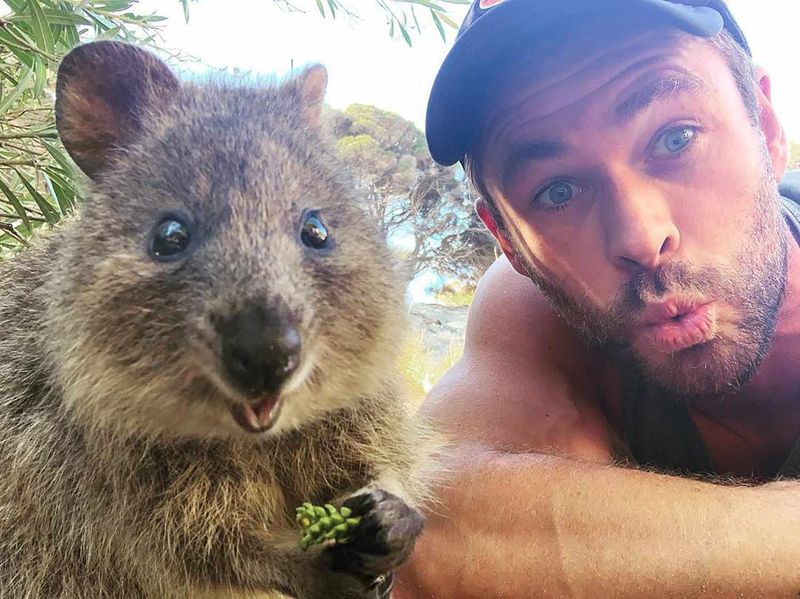
Often called the happiest animal on earth, the quokka’s cheerful expression has made it a social media sensation. Inhabiting Rottnest Island, Australia, they are known for their friendly interaction with visitors.
Quokkas are herbivores, feeding on grasses and leaves, and are harmless to humans. Their approachable nature and iconic smile have endeared them to many.
Their presence on the island is a testament to Australia’s diverse wildlife, embodying the charm and whimsy of nature. Despite their popularity, it’s important to respect their wild existence and natural behavior.
Axolotl
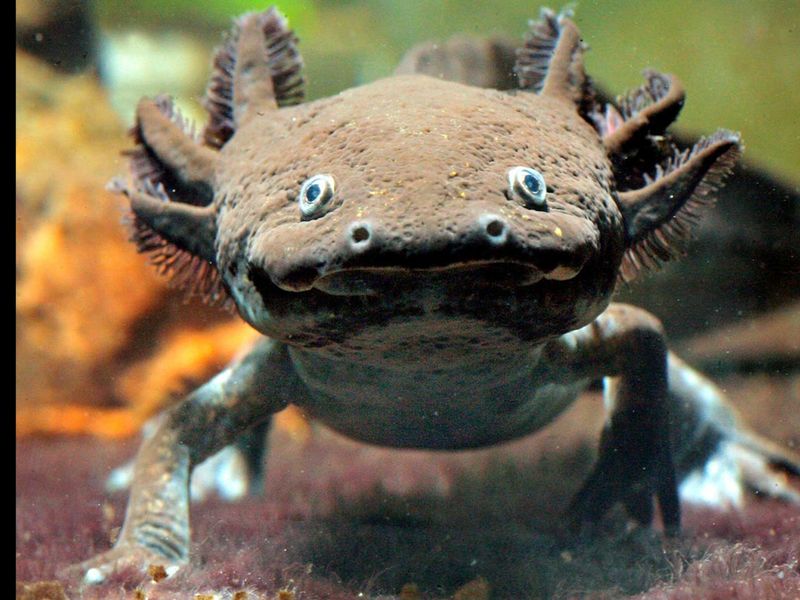
The axolotl, often referred to as the Mexican walking fish, is an amphibian native to Mexican lakes. Its ability to regenerate body parts has fascinated scientists and animal lovers alike.
Despite its exotic appearance, it poses no danger to humans. Axolotls are carnivorous, but their diet consists of small aquatic organisms.
Their quirky looks and unique regenerative abilities have made them popular in captivity and research. However, they are critically endangered in the wild, highlighting the importance of protecting their natural habitats.

